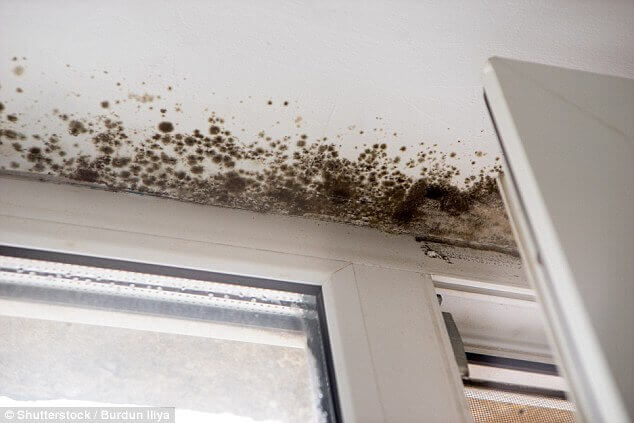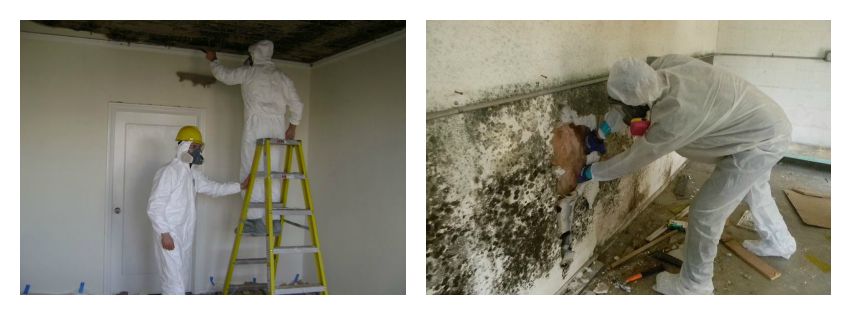Mould in your house is one of any homeowner’s worst nightmares! Aside from being an eye-sore and generally being aesthetically unappealing, it can be a health hazard and annoyingly, can spread like wildfire.
Whether the mould in your home is a small patch or has taken over a larger area, or whether it is on the internal walls of your house or the external walls – getting rid of it should definitely be your first priority! After you have begun to tackle the mould problem, you should just and find out what it is that is causing mould to appear in or on your property, so you do not have to go round in circles with it and stop it the first time.
It is true that mould can often be a sign of a much bigger, underlying, problem in your home. Mould can cause long-term damage to the structural integrity of your house. While mould might be simply a symptom of a larger problem, this does not mean it is a harmless thing. In isolation, mould causes a lot of issues, particularly for elderly people or children. Furthermore, mould exposure can be damaging to those with respiratory issues such as asthma, an existing skin condition or a compromised immune system.
In this article, we will tackle mould; from the causes, to how to get rid of it, to then keeping the infestation of mould away for good!
What are the causes of mould?
Mould is caused by humidity – which is a high level of moisture in the air. However, mould only starts to manifest and grow on a surface that has been wet for over 24 hours. Therefore, mould is a symptom that your property had a deeper problem with damp. Damp is not uncommon, with the Independent claiming that around 61% of rental properties have had cases of damp, mould or leaking roofs in the UK. In England alone, it is estimated that one in eighteen properties suffers from damp of some description.

There are actually different types of damp, and in finding out which one is affecting your property, will help to get rid of it and get rid of it for good! The most common culprit of causing damp is condensation. This explains why damp and mould usually appears in the steamiest rooms in ones house: the bathrooms. If you have worked out that condensation is not a/the issue in your home, the problem is likely to be something a bit more serious, like ‘rising damp’. To learn how to deal with rising damp in more detail, click here.
As mentioned, humidity is an issue for houses. Other than humidity resulting from the shower or taps, houses near water, like a lake or near the coast, are more likely to suffer from damp and thus, mould infestations. The moisture levels in the air tend to increase during long periods of unpleasant, wet weather. You may notice mould appearing in your house or on the outside of your house after a few weeks of rain, this might be caused by a general increase in humidity in your house.
If mould is worse in one particular patch, it may be a sign of a weakness in your property’s external walls or even a leak in the guttering on your house.
How to deal a mould problem
To get rid of mould always remember to wear:
- Rubber gloves
- Safety googles
- A dusk mask
This may sound slightly extreme to some, but mould is not nice to deal with, and you certainly do not want to breathe it in.

You can get special mould cleaning spray, that does what it says on the tin, or you can create one of your own out of household cleaning items. To make this you will need; one part bleach to four parts water – this is said to be just as effective as ready made mould killer spray that you can buy at the supermarket.
Remove the mould with a damp cloth, and make sure to scrub gently until it is gone. Once you feel like you are finished, be sure to dry off the area with a soft cloth. If the area stays wet, the mould will return or worsen.
It is known that mould likes warm, dark spaces and moisture. It is advised to open curtains during the day so that plenty of natural light is let in. AS soon as you notice condensation appearing on your walls on ceilings, aim to dry it immediately.
Mould doesn’t just appear from nowhere, it always has a cause – it is a fungus and grows from spores. Dusting, cleaning and vacuuming will often get rid of dormant spores and thus should reduce any risk of the mould returning. Furthermore, mould feeds on organic materials such as:
- Wood
- Cardboard
- Cotton
Be sure to disinfect all the wooden surfaces in your home, wash fabrics and always replace cardboard storage boxes. These will hopefully help to get rid of any unwanted spores that are hidden and lurking in your house.
If the mould is being caused by water entering your property vis guttering that is damaged or blocked, then you will be required to either replace, repair or clear the gutter out if you want to tackle the problem of mould. Mould can sometimes be caused by damaged brickwork or leaking pipes within the internal walls of your property; this will need to be dealt with by a professional in the majority of cases.
If your house is suffering from the likes of rising damp, you will need to think seriously about contacting a professional builder. The builder will be tasked with adding a damp proof course. This then creates a strong barrier and consequently stops water from being absorbed from the ground, which is where the problem of rising damp starts.
Once you have discovered the root of the problem, it is important to keep an eye of everything that may be triggering your mould, and keep your house well ventilated to stop the damp from coming back.


